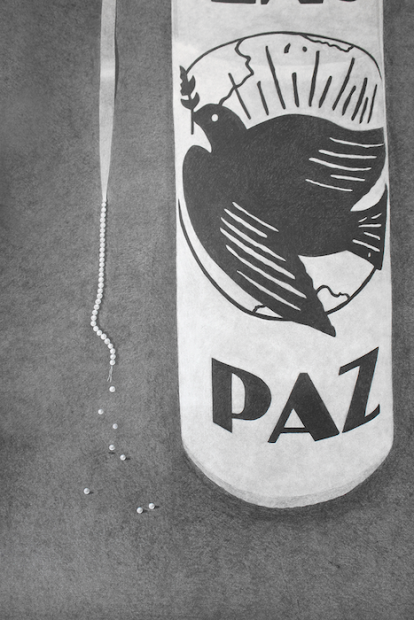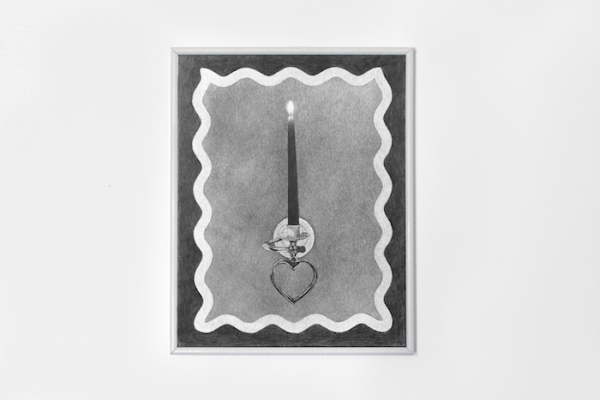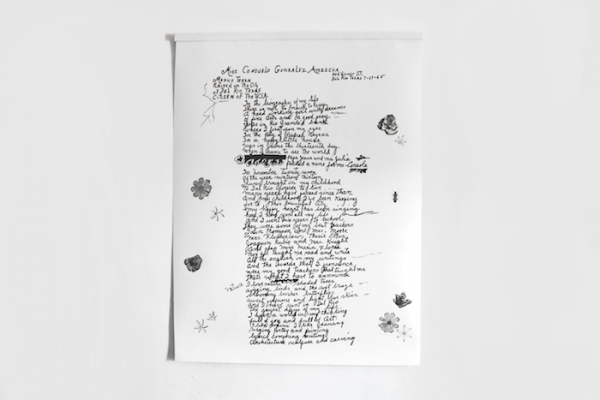Some artists and their works — say Maya Deren’s Meshes of the Afternoon, the last two Talk Talk albums, or Chris Ofili’s The Blue Rider series — are so confident in the dream worlds they inhabit that they become “songlines,” paths through the desert of myths and symbols. Like the master himself, David Lynch (“I like to dream in the dark” he once says in a documentary), the path may not lead somewhere, but that’s beside the point. It all makes sense as a whole, and feels strangely lit, like light coming out of a canyon.
In the remarkable show of Corpus Christi-based artist Ashley Thomas at Las Cruxes in Austin, the artist takes a series of ordinary, otherwise unremarkable objects and through an exquisite and rigorous technique with graphite creates works that become a beguiling “night sea journey.” As artist and writer Lauren Moya Ford writes in the exhibition brochure: “The objects that Thomas portrays are carefully chosen, and the artist’s hand and attention lends them new meaning. As Thomas’ subjects cross from materiality to two dimensions, they also cross conceptual, geographic, and temporal borders.” The objects chosen take on heft through the process — they are lacquered, sanctified.
In the centerpiece of the show, the astonishing, large-scale triptych Candles (pictured at top), Thomas takes votive candles from a botanica and portrays them not in actual size, but the looming size of their perceived and desired impact. Botanicas are a staple of South Texas Latino culture — the selling of votive candles, oils, and charms for various desires (peace, protection, even revenge) — as Doctor John sings in Gris Gris: “I got remedies of every description.” The three candles in the piece are for peace and warding off evil. Connecting the three panels is a line that transforms, as if intuiting the vagaries of memory and assuming a form most conducive to tapping the source. A phone cord becomes a ribbon, which through the deft use of the trompe-l’œil technique appears to weave in and out of the panel. (“I am a thread pulled by the swift needle of time” the poet whispers in Tarkovsky’s The Mirror.) The ribbon eventually becomes a strand of pearls that scatters, and memories fade. The plot gets lost; sometimes in the dream, in life, you find yourself in a field unsure of how you got there. The hyper-detail, size, and symbolism of Candles are overwhelming. It is simply the most beautiful and impressive piece I’ve seen this year. It appears incandescent, embossed, like Flemish illuminated manuscripts to light one’s way.
The smaller pieces in the show complement the altar of Candles. A sand dollar, a swan, a sconce with a lit candle and a heart-shaped loop. These simple and elegant subjects are gracefully framed and full of possibilities and meanings. Ford writes: “Her gracefully drawn arrangements evoke an empowered imaginary space where meaning is opened, events can shift, but remembrance remains a strength.” This “glide” quality of the pieces results in a feeling of one flowing to the next like a circuit of sorts that change and reform its sequence at each viewing.
In Consuelo González Amezcua’s Handwriting, a piece I first saw last fall, Thomas transcribes a beautiful, plaintive poem by the Del Rio-born outsider artist. “I have a world in my thinking full of joy and full of art,” she writes. This connects to the title of the show — the house is the body and the universe the mind.
There is a current of thinking that for art to “matter” (whatever that means), it must be on some level upsetting. In a recent interview with new editor-in-chief of Art Forum, David Velasco, he states: “…I want to feature art that really fucks with you, and then I want writers who will explain to you that it’s fucking with them, and sharing how and why it does so. And why that should matter to you.” I find this to be a somewhat chauvinist and reductive position. I don’t always want to be fucked with. Beauty and grace can be just as transporting. After all, the songlines were beautiful so you could remember them, to recite, to lead you through the desert.
Through July 31, 2018 at Las Cruxes, Austin.






